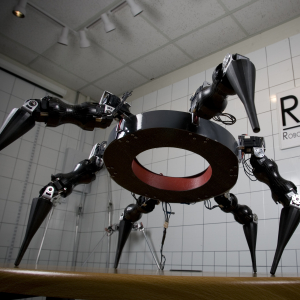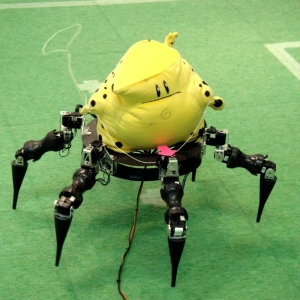The Multi Appendage Robotic System (MARS) is a six legged robot fabricated out of carbon fiber and aluminum with its legs spaced axi-symmetrically around its body, allowing for omni-directional walking. Each limb uses a 2 DOF proximal joint, and a 1 DOF distal joint, a reduction in overall leg maneuverability from previous versions, for added strength and rigidity in the proximal joint. The project’s current focus is creating a walking gait system which would allow MARS to cross over unstructured terrain (terrain with variations in height). The system is fundamentally based on simplified biological neuron models, differentiated by respective ion currents and arranged into various sub-networks and subsystems to support the operation of a central pattern generator (CPG). The CPG, another neural network, in real time generates gait patterns (foot fall pattern) for MARS based on feedback from all supporting systems, taking into account such things as posture and energy consumption.


